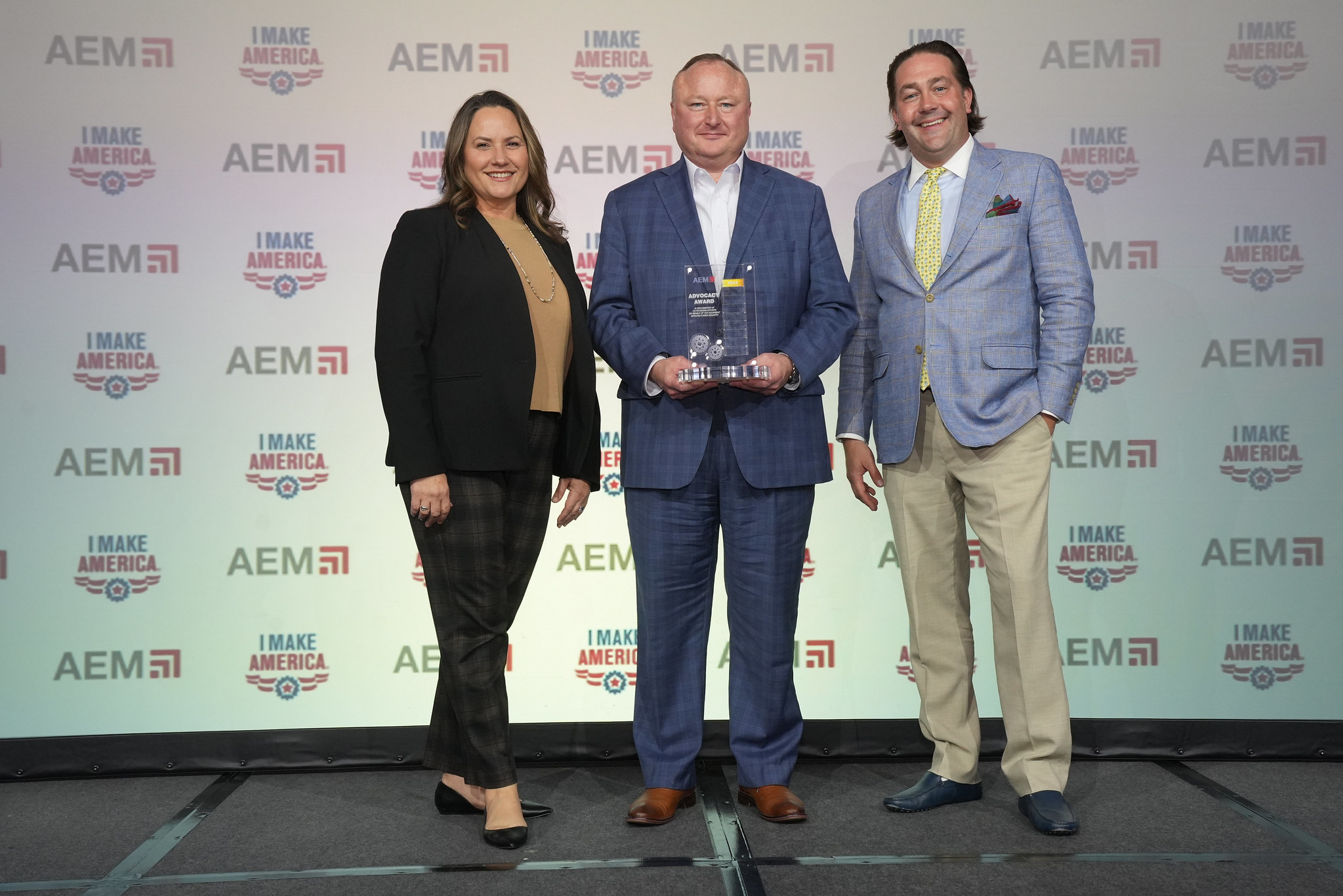By Julie Davis, AEM Director of Workforce Development
The manufacturing industry has found itself lagging behind when it comes to capitalizing on the advantages offered by cultivating a diverse workforce. And, as the industry continues to face difficulties filling existing job openings, it’s becoming increasingly necessary for organizations to target, develop and eventually apply a new approach to fostering diversity and inclusion.
The research and data is clear: A diverse workplace is more innovative, more creative and better at decision-making and problem-solving. More importantly, however, diversity leads to lower employee turnover, improved hiring results, engaged employees and, ultimately, a more reputable (and profitable) organization.
However, in order to capitalize, many manufacturers and other organizations in the skilled trades need to re-evaluate – and eventually overhaul – their approach to diversity and inclusion outreach.
Recent data from the U.S. Bureau of Labor Statistics, Western Growers Magazine and PwC’s 2017 Global Diversity & Inclusion Survey shows:
- 9% of construction professionals are women; 29.5% of manufacturing workers are women; 50.8% of the U.S. population is comprised of women
- 7% of construction professionals are Hispanic/Latino; 16.6% of manufacturing workers are Hispanic/Latino; 18.5% of the U.S. population is comprised of Hispanics/Latinos
- 2% of construction professionals are black; 10.1% of manufacturing workers are black; 13.4% of the U.S. population is black
- 2% of construction professionals are Asian; 7.1% of manufacturing workers are Asian; 5.9% of the U.S. population is Asian
- 9% of manufacturing workers are white; 76.3% of the U.S. population is white
- 36% of U.S. farmers are women and roughly 7% are racial minorities
- 87% of consumer and industrial products organizations agree that diversity and inclusion is a stated value or priority
- 46% agreed that lack of diversity is a barrier to progression in their organization
- Only 33% of industrial manufacturing and mining companies have a C-suite diversity and inclusion leader
The strategies below can help any company – regardless of size, geographical location or industry served – become more diverse and inclusive, as well as become more innovative, productive and profitable along the way.
Access more resources and information by visiting the AEM Workforce Solutions Toolkit.
1. Build the case.
As with any initiative, without leadership backing the effort, true success will remain out of reach. The good news is that there is a great amount of data available to support opening manufacturing’s door to diversity. The key is to know what information (data points, articles, research reports and case studies) will be most effective in building a case. Don’t forget that leadership includes everyone in the organizational hierarchy – from executives to managers. Start at the top and go from there.
Some resources to help companies build a case include:
- All In: Shaping Tomorrow’s Manufacturing Workforce through Diversity and Inclusion; Part 1: Leading with D&I: Setting the Tone – and Culture – From the Top
- Women in Manufacturing: Stepping Up to Make an Impact That Matters
- Diversity Wins: How Inclusion Matters
It helps to understand and be able to articulate any current for future workforce gaps to make a relevant case for diversity and inclusion. Make sure to discuss both the challenges and opportunities from as many leadership perspectives as possible. Understanding community demonographies will help an organization understand and communicate what diversity and inclusion success may look like from its own standpoint. The most important thing to remember, however, is it’s not a one-size-fits-all proposition. Workforce diversity should reflect the diversity in the local community.
2. Understand the challenges.
Although diversity and inclusion, when implanted in the culture and structure of an organization, offer a wealth of significant benefits, there are challenges that will need to be overcome along the way. Identifying and discussing potential challenges before creating a strategy can help companies prepare themselves accordingly.
Consider the following:
- Organize a team that can discuss and try to anticipate what roadblocks could occur when introducing diversity of gender, age, belief, physical or mental disability, language, ethnicity or culture into the workforce.
- Plan a strategy that has goals focused on respecting and accepting the differences of others.
- Before getting to a place of mutual respect identify existing issues, provide diversity and bias education, create policies, and plan how people will be held accountable for new expectations.
3. Create a multi-focused strategy.
When creating a diversity and inclusion strategy, make sure that to include a focus that goes beyond how employees will be expected to engage with each other. Diversity and inclusion efforts will fail before they start if intentional focus is not placed on recruitment, hiring and retainment. Outreach and hiring practices need to be screened for bias. Interviewers should receive training on how to approach the process with new awareness of unintentional bias. Different approaches to outreach should be considered, and they may need to include updates to images and language. Even how ads and job descriptions are written should be reviewed.
Good diversity and inclusion retainment strategies should result in increased employee engagement and a culture of fairness and equality. Employee development correlates with better retainment. As manufacturers begin to welcome women and minorities into their workforce, they must also engage and develop them. Understand that opportunities for development should be offered to all, and that it may need to take place in ways that typically haven’t been done in the past. For example, while men may be comfortable stepping forward to be cross-trained on equipment, some women may need to be specifically asked if they want to participate. This may have nothing to do with competence, but rather everything to do with confidence. As women and minorities see others like themselves growing and succeeding, they will likely become more confidant in stepping forward. Initially, a manager that is willing to take the extra step of inviting participation may be just what’s needed.
Every strategy should begin by benchmarking the current state of diversity and inclusion that exists. Don’t feel discouraged if the benchmarking returns poor results. All it serves to do is add emphasis that the work being considered needs to take place. While benchmarking is taking place, consider creating some foundational goals and priorities. Successful initiatives include ongoing education, training and communication at all levels of the organization. Tie these common elements into existing plans.
Inclusive teams can be built with the goal of collecting employee feedback and suggestions, as well as problem solving inclusive solutions. New or updated policies and procedures, including how employees will be held accountable for new expectations, should be created. Don’t forget to include checkpoints and metrics to measure progress along the way.
4. Get started.
Experienced and successful organizations will testify that knowledgeable, engaged leaders as well as ongoing education, and accountability are the keys to successful diversity and inclusion initiatives. Nothing measures the progress and success of a diversity and inclusion program as much as what day to day operations look like, sound like and feel like. To be able to make progress, there must be clearly defined and communicated goals, expectations and accountability. Remember along the way that any efforts undertaken will be worth it in the long run. When it comes to diversity and inclusion, the ultimate success of increased innovation, quicker problem solving, higher productivity and a better bottom line await.
Make the case for diversity and inclusion relevant by understanding and being able to articulate any current or future workforce gaps. Make sure to discuss both the challenges and opportunities from as many leadership perspectives as possible. Understanding community demonographies will make it easier understand and communicate what diversity and inclusion “success" may look like in the end.
Diversity and inclusion can seem like big issues to take on, especially for those organizations that aren’t sure where to begin. However, there are plenty of resources, partners, and support available when the time is right to commence with an initiative – one which eventually lead more innovation, greater productivity and increased profitability.
Learn More
For more support, ideas, or information, get started by visiting the AEM Workforce Solutions Toolkit or contact AEM’s Julie Davis at jdavis@aem.org.
For more perspectives from AEM staff, subscribe to the AEM Industry Advisor.





